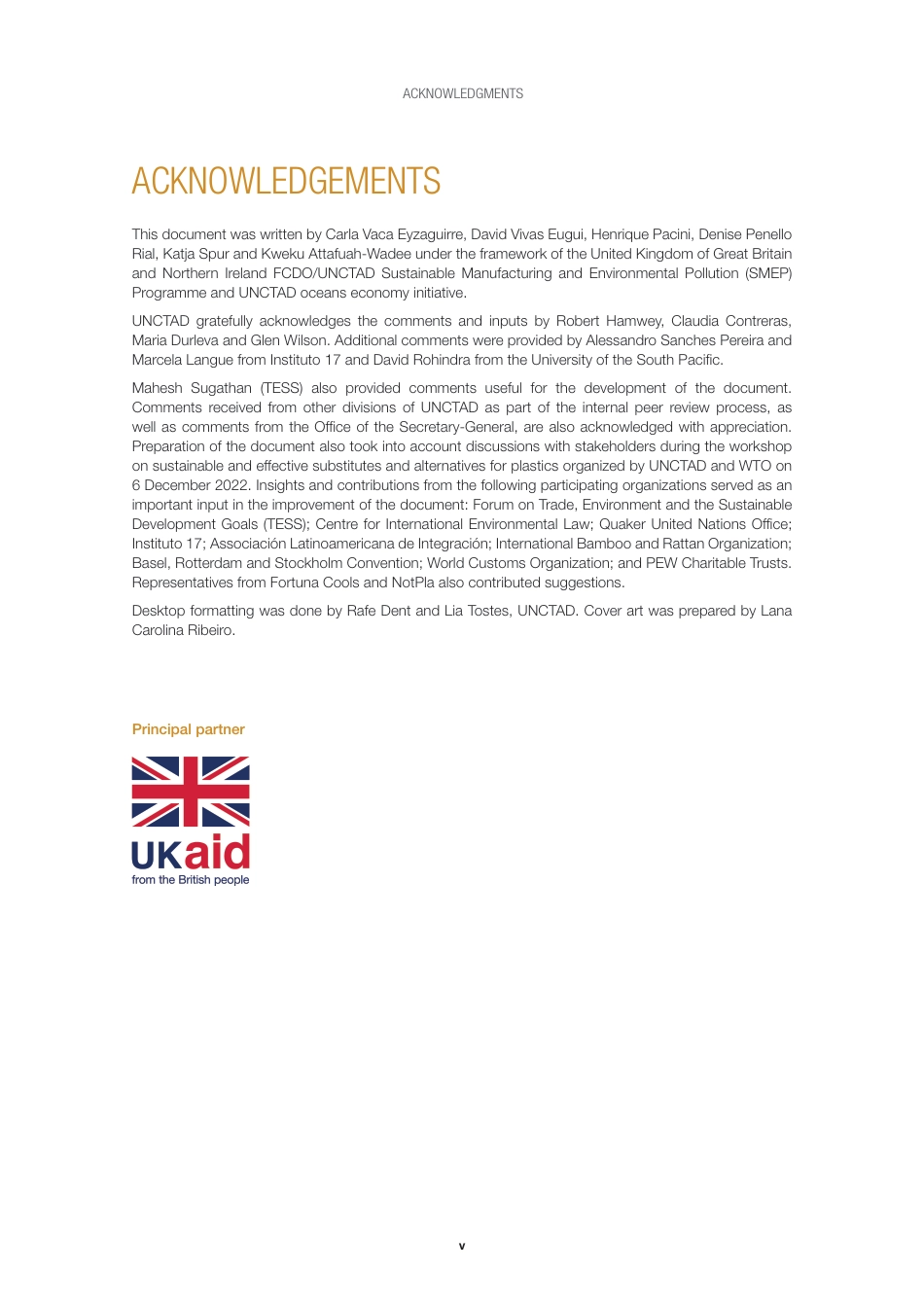Geneva, 2023Plastic Pollution The pressing case for natural and environmentally friendly substitutes to plastics© 2023, United NationsAll rights reserved worldwideRequests to reproduce excerpts or to photocopy should be addressed to the Copyright Clearance Center at copyright.com.All other queries on rights and licences, including subsidiary rights, should be addressed to:United Nations Publications405 East 42nd StreetNew York, New York 10017United States of AmericaEmail: publications@un.orgWebsite: https://shop.un.org/The findings, interpretations and conclusions expressed herein are those of the authors and do not necessarily reflect the views of the United Nations or its officials or Member States.The designations employed and the presentation of material on any map in this work do not imply the expression of any opinion whatsoever on the part of the United Nations concerning the legal status of any country, territory, city or area or of its authorities, or concerning the delimitation of its frontiers or boundaries.Mention of any firm or licensed process does not imply the endorsement of the United Nations.This publication has not been formally edited.United Nations publication issued by the United Nations Conference on Trade and DevelopmentUNCTAD/DITC/TED/2023/2ISBN: 978-92-1-101475-4eISBN: 978-92-1-002722-9Sales No. 23.II.D.11vACKNOWLEDGMENTSACKNOWLEDGEMENTSThis document was written by Carla Vaca Eyzaguirre, David Vivas Eugui, Henrique Pacini, Denise Penello Rial, Katja Spur and Kweku Attafuah-Wadee under the framework of the United Kingdom of Great Britain and Northern Ireland FCDO/UNCTAD Sustainable Manufacturing and Environmental Pollution (SMEP) Programme and UNCTAD oceans economy initiative.UNCTAD gratefully acknowledges the c...



